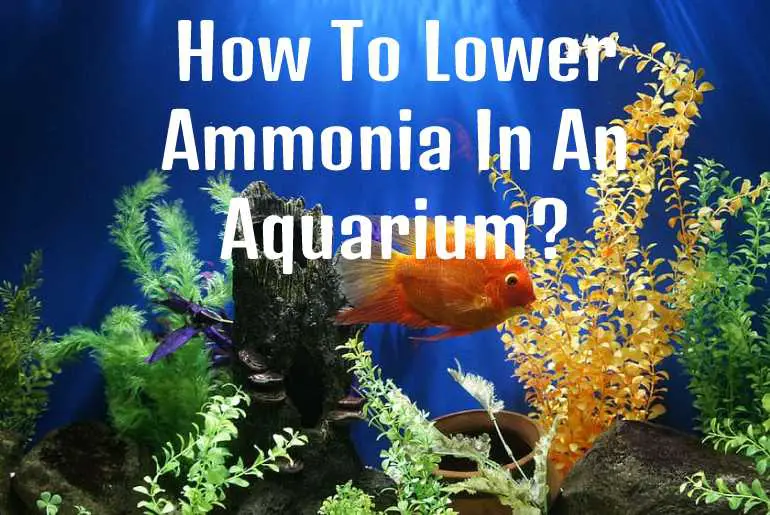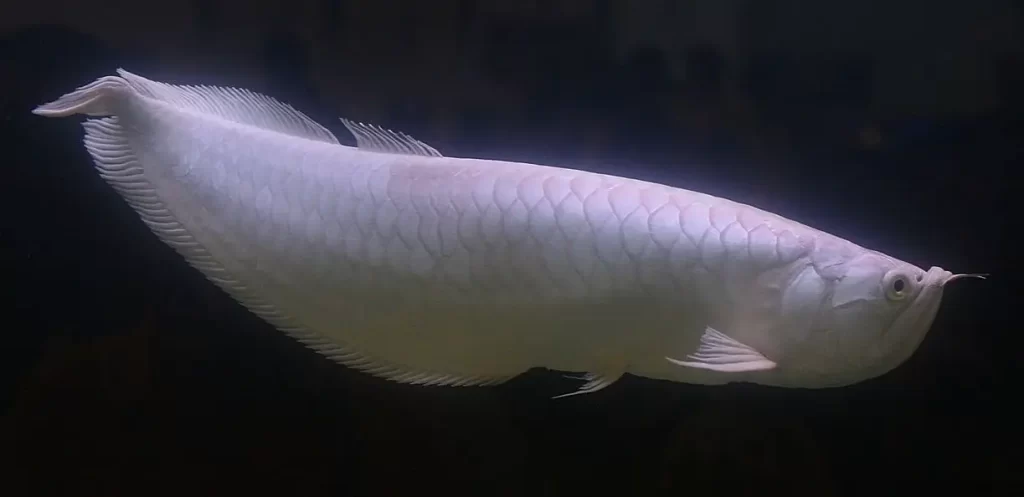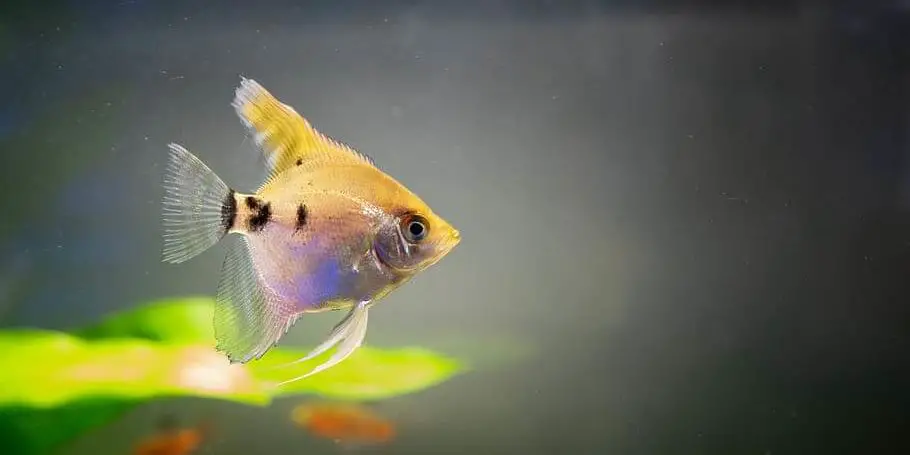Ammonia is the most toxic thing you can have in your aquarium. This chemical compound can harm the fish in a way you will never understand and get over. So, when you test the water and see the high level of ammonia in the tank, you will sweat and worry a lot. I know the feeling, trust me. I have made way more mistakes in fishkeeping than I can imagine. But our problem isn’t the already made mistake, is it? Now, we should be looking for a way to right the wrong. So, how to lower the ammonia in an aquarium?
Well, lowering ammonia is no rocket science if you know what you are doing. Changing the water a few times and filtering out the aquarium water with a cycled filter will lower the ammonia sooner than you think.
But to be honest, don’t let the ammonia spike up in the first place. The damage a little ammonia can do in the fish tank can be irreversible sometimes.
In this article, I will tell you all about lowering the ammonia in the aquarium and don’t let it spike all over again.
So, with no further ado, let’s get this started.
How To Lower Ammonia In An Aquarium?
Isn’t it scary when you see ammonia level rising up in the tank? When I came across it for the first time, I freaked out and ended up killing a fish in the process.
I don’t want you to make that mistake and trust me it is one of the aquarium beginner’s mistakes everyone will go through.
You will do great once you figure out what is happening in your tank and why the ammonia level keeps rising up.
But for now, I am going to help you to lower the ammonia first. And after that, we will talk more about the reasons and preventive measures. How does this plan sound?
Okay, Now carefully, follow my instructions and trust me there is no reason to blame yourself. This happens but don’t let it happen again, alright?
Water Change
First and foremost, diluting the ammonia content in the water will do the trick. And I think you know how to dilute the water.
Remove 40 percent of previous water and add the same amount of new water with no ammonia content. Trust me it is as simple as that.
No rocket science, no foul play, no shortcuts. Just a clear water change can solve your problem within an hour or 2.
But I hope you know how to change the water safely. If you don’t I know just a thing that will help you.
Read this article thoroughly and follow the instructions properly Is Too Much Water Change Harmful For Your Fish: How To Do It Safely?
I hope you can do that. Let me know how it goes.
Completing Aquarium Nitrogen Cycle
The simplest way to reduce the ammonia level in the aquarium is to install a filter with biological filter media where the beneficial bacteria are present adequately.
Once these nitrifying bacteria present in the tank perform the aquarium nitrogen cycle, ammonia will be abolished from existence.
Firstly, the first set of beneficial bacteria will convert ammonia into nitrite and another set will convert this nitrite to nitrate.
The end product i.e., nitrate is quite an essential supplement for the growth of plants in the aquarium.
Hence, you will kill two birds from one stone when you let the beneficial bacteria perform a complete nitrogen cycle.
This is also the reason why experts ask you to cycle the tank beforehand to let beneficial bacteria establish their colonies in the filter media.
Clean The Filter Or Replace It With A Cycled One
You see, cycled filters have beneficial bacteria living happily and flourishing together. And as you might already know, beneficial bacteria are nitrifying bacteria that convert ammonia into less toxic and essential compound nitrate.
So, if you have any other tank or know a pet store close by, ask them for a cycled filter. This will make your work way easier and the ammonia will get away sooner.
Or remove the debris stuck in your filter, let your beneficial bacteria breathe and they will start to colonize faster.
In no time, they will start performing aquarium nitrogen cycling, consuming all the ammonia present and giving out nitrate.
Use Water Conditioner
Okay here is where it gets tricky. Most water conditioners will remove the chlorine from the water.
So, for removing ammonia from the water, you need to use a water conditioner that comes with ammonia removal capacity as well.
I will suggest you few of them and I think that will work for you if you are a beginner at water change too.
Seachem Prime Fresh and Saltwater Conditioner and TankFirst Complete Aquarium Water Conditioner will help you to solve the ammonia as well as other chemical problems present in the tank.
Use Ammonia Removing Filter Media
The easiest way to remove ammonia is by adding ammo-chips into the filter media. These things will soak up all the ammonia present in the water when the water passes through the filter.
There are no side effects whatsoever when you use this mineral to remove ammonia from the tank. But follow the instructions carefully.
MarineLand Diamond Media Premium Activated Carbon, Blacks & Grays, 40-Ounce and Ammo-Chips are great ammonia remover. Give them a try!
What Happens If You Don’t Lower The Ammonia In An Aquarium?
As I have mentioned earlier, ammonia is toxic for your fish and the consequences it will bring in the tank is beyond imagination.
I will tell you all about it and I must warn you it can be scary as hell. Ammonia is way more dangerous.
So, never take it lightly and try to counteract the problem before it unleashes hell in your fish tank.
But ammonia might be bad for your fish, but it will be useful for the aquarium beneficial bacteria in the filter media.
And the end product of aquarium nitrogen cycle performed by nitrifying bacteria will be important food for plants.
So, let keep the ammonia level zero and if we don’t do so, here are things that will happen:
- Your Fish will be stressed out.
- Redness around the gills and body of fish.
- Color fading due to ammonia poisoning.
- Suffocation in fish is one of the common side effects of ammonia presence.
- Ammonia poisoning
- Various diseases in fish
- Imbalance in the ecosystem of the fish tank
- Death of your fish
What Causes Ammonia In An Aquarium?
Ammonia won’t make them welcome in the tank if you do everything right by the book. To be honest, most of the time the spiking of ammonia will be your fault.
Carelessness and overlooking your responsibility will make it hard for you to keep the ammonia level zero in the aquarium.
Once you learn about the causative agents of ammonia spiking, you will surely know whom to blame for this mischief.
Here are the causes of ammonia in the aquarium. Read them carefully and understand where your fishkeeping went south.
Overfeeding Your Fish
When you overfeed your fish, the fish excretion rises up too. The fish will even leave the extra food in the tank as it cannot finish all the food you have given them.
Uneaten food will decay in the tank producing ammonia as the byproducts. And, fish excretion will already have ammonia in it and hence the higher level of ammonia in the tank in no time.
Overstocking Your Aquarium
Fish excretion is the main reason for ammonia production in the tank. When there is high number of fish present in a small tank, the excrete will exceed and the filter will not be able to handle all the waste products.
Hence the ammonia production rises up and will take up to the level that is harmful for the same fish that produced ammonia in the first place.
Filter Malfunction
When your filter works properly, you will barely face the problem of ammonia poisoning or nitrite intoxication.
The level of ammonia depends on how good your Aquarium filtration method is. When the filter cannot clean the water properly and remove the toxins out, ammonia poisoning is the result you will be getting.
Wilted Leaves And Dead Fish
The dead fish is the reason for ammonia production as well as the wilted and dead leaves and plants.
If you leave these things in the tank for a long, the ammonia level will spike up within few hours.
Poor Tank Maintenance
When you don’t vacuum the gravel, the hidden leftover will produce ammonia leading to ammonia poisoning.
How Much Ammonia Can Fish Tolerate?
Well, your fish have no intolerance in terms of ammonia. Even the slightest amount of ammonia in the tank can harm your fish and stress them out.
At any condition, you need to maintain the ammonia level at 0.0 ppm as above it is dangerous for fish. If the ammonia level reaches 1 ppm then you will find your fish dead.
Even the hardy fish with slight tolerance capacity will fall ill and make it hard for you to save them.
The beneficial bacteria in the filter media or in the tank might not be performing the aquarium nitrogen cycle.
Or there is not enough bacterial colony to lower the ammonia in the tank. Make sure you take every necessary step to reduce and take ammonia level to 0 ppm as soon as possible.
What Are Signs Of Ammonia In An Aquarium?
Ammonia comes up in the tank with a bang. And trust me here, I am not lying when I say you will notice the presence of ammonia as soon as it shows up.
The reaction time between the ammonia spiking up and affecting the aquarium system is very short. So, you have to keep on looking at the signs ammonia presence shows in the tank.
Life can get real messy once these toxic pollutants make themselves the mere reason for degradation.
Now let me tell you what ammonia will do in the tank or the signs you should look at to know if the ammonia level is peaking up.
Fish Behavior
Your healthy and happily swimming fish will start to act lazy and stop eating food given to them. These small sensitive living things will start to swim very hazily or won’t swim at all.
They will just keep gasping for air as they will be suffocating within the tank no matter the high oxygen level.
Lethargy In Fish
Fish will clearly leave behind all the fun activities and will sit on the bottom of the tank doing nothing. Ammonia can be way more toxic to fish health than you can imagine.
The slow and gradual process of killing the fish starts with the no activity and laziness in fish. Ammonia poisoning is the scariest thing you can have in your tank.
Gasping For Breath
Your fish will swim towards the surface and gasp for breath. Ammonia in the aquarium will suffocate your fish.
You will find your fish struggling to let in the air and trying hard to keep themselves alive. Even the hardiest of fish will have a hard time when the ammonia level goes higher.
Redness Around The Gills
Due to the damage ammonia can do to the gills, the area around the gills will start to have a red patch or clear-cut redness.
Ammonia can burn out the body of fish and you will be seeing a lot more redness all over the body. Your fish will be suffering from excruciating pain.
Sometimes this redness will turn into an infection and hence you will be dealing with a whole new problem after a while.
Odor
The odor is the most prominent thing to give away the presence of ammonia in the tank. Fish excretion already has a bad odor affecting the environment of the tank.
The presence and production of ammonia make it more intolerable. This odor will be like the smell of cat urine or sometimes the smell of vinegar.
The odor might not give away the presence of the slightest hint of ammonia. So, it is better to keep testing the water more often.
How Long Does It Take To Lower Ammonia Levels In An Aquarium?
Well, this depends on the level of ammonia present in the tank. If the tank is new and is cycling, then it is okay to have a high level of ammonia.
After 1 to 3 weeks the ammonia level will start to drop due to continuous cycling and nitrites and nitrates will start to show up on the test kit.
Don’t worry they will be gone eventually too. And if we are talking about cycled matured tank, then the level of ammonia can be removed by simple water change almost immediately.
If the level of ammonia is higher, then you have to look at various chemical supplements and water changes more times than usual.
This process won’t take a long time as chemical supplements work almost immediately after exposure.
While the water change might take a week or two but it will be sooner than you think.
How To Prevent Ammonia From Building Up In The Tank?
Okay, now let’s talk about preventing ammonia production in the tank in the first place. You can’t risk having ammonia in the tank.
So, here I will help you to prevent ammonia to build up in the first place. I promise you this will be as easy as cleaning your room. I hope you have a clean room!
Okay, jokes apart, Here is what you need to do:
- Keep test kits at home and check the water condition more often. Being informed is actually better than getting surprised when the symptoms show up. API AMMONIA TEST STRIPS will come in handy in this condition.
- Clean the tank often and remember to remove dead fish and leaves from the tank. Learn more about The Easiest Way to Clean and Maintain Aquarium.
- Vacuum the gravel more often.
- Do not overfeed your fish and remove the uneaten food almost immediately.
- Check the condition of the filter and clean your filter once every month or two.
- Do not wash the biological filter media housing beneficial bacteria.
- Do not use water with traceable ammonia content while performing a water change.
- Keep the oxygen level on check so you don’t mistake fish gasping for breathe as ammonia poisoning. Here is an article for How To Maintain The Oxygen Level In Aquarium?
- Use live plants in the tank as they will remove the final product of the aquarium nitrogen cycle.
- Remove the algae from the tank and don’t let it decay in your aquarium. Learn more about How To Get Rid Of Algae In Fish Tank Naturally?
- Do not pour the fish bag water along with the fish into the tank as the ammonia content is high in bag water when you keep fish in it for longer time. Learn more about How Long Can Fish Live in a Bag: Shocking Facts!
Frequently Asked Questions
You might like to know more about ammonia and its consequences and maybe wondering answers to the following questions too.
How Do You Control Ammonia In A Biofloc Fish Tank?
In the biofloc tank, the biofloc technology system manipulates the C/N ratio and consequently achieves a ratio that actually helps the activity of the bacterial colonies present in the tank.
This way the accumulation of nitrogenous compounds like ammonia-nitrogen is figuratively removed from the biofloc fish tank.
Does Water Conditioner Remove Ammonia?
No, the Water conditioner doesn’t remove ammonia from the water. It, although, breaks the chemical bond between chlorine and ammonia and later destroys the chlorine properly.
The ammonia will remain in the water and hence keeps on degrading the water quality. But if you get a high-quality conditioner with a known feature to neutralize ammonia, you may be able to kill two birds with one stone.
Conclusion
In conclusion, you need to lower the ammonia in an aquarium as soon as possible. But it is even better to never let the ammonia rise from level zero. Maintaining the tank won’t be so hard if you have enough idea about what you need to do. You need to make sure that water parameters are always optimum. Get a good filter and a heater for your tank along with a good quality of dechlorinated water.
Fishkeeping isn’t as easy as it may seem but it isn’t rocket science too. You will be just fine if you follow the instructions and rules of fishkeeping properly.
Good Luck!!!
Happy Fishkeeping!!






